FT-IR Spectrography (more info)
Fourier transform infrared spectroscopy (FT-IR)
The laboratory is equipped with a Fourier transform infrared spectrophotometer (Spectrum 3, Perkin Elmer) on which it is possible to assemble various accessories, such as transmission, attenuated total reflection (ATR), diffuse reflectance (DRIFT) and cell for gas analysis, depending on the type of sample to be analyzed.Infrared spectroscopy is a technique that provides information on the presence of functional groups. By irradiating the sample with an IR radiation, molecular vibrations are observed which by varying the electric dipole moment increase the amplitude of the vibrational motions of the molecule bonds, such as stretching (stretching) and bending (bending). The IR spectrum reports the percentage transmittance (T%) or absorbance (A) as a function of the wave numbers (cm-1) and is divided into two areas: the functional group area (4000-1250 cm-1) and the finger print area (1250-500 cm-1). In the first area, the peaks are due to the functional groups present within the molecules while the signals in the second area are typical and characteristic of the molecule. Therefore, each molecule has its own characteristic spectrum and it is possible to obtain structural information since the absorptions of each type of bond are found only in certain spectral regions, characteristic wave numbers for each class of functional groups. Analyzes can be performed on solid, liquid and gaseous samples. The solids and liquids can be analyzed as such or after mixing with a matrix transparent to IR radiation, such as potassium bromide (KBr).
Transmission
Simpler IR technique, as it is based on the positioning of the sample, solid or liquid, along the path of the IR radiation. In this case, the solid sample must be a film, suitable for the analysis of polymeric films, while for liquid samples it is necessary to use a chamber with KBr windows.
Attenuated Total Reflection (ATR)
It is the most used technique for the acquisition of IR spectra as it is fast and does not require any sample preparation, it improves the spectral reproducibility. The sample, liquid or solid, is placed directly on the surface of the ATR crystal (transparent IR material with high refractive index, ZnSE, ZNS, Ge, Si, diamond). The IR ray emitted by the source is directed onto the crystal at an angle of incidence that allows the total reflection of the ray at the crystal-sample interface. After penetrating inside the sample (0.5-3μm), and therefore being attenuated by absorption by the molecules, the ray is sent to the detector. In ATR it is possible to work on solid or liquid samples in small quantities. In the case of solid materials with non-homogeneous surface, powders or highly volatile liquids in air, it is necessary to apply a pressure in order to maximize the contact between the material and the surface of the diamond.
Gas analysis by gas cell
The gases can be analyzed using a gas cell. The gas cell has high optical paths due to the presence of mirrors inside the cell that allow repeated reflections of the IR radiation. As the length increases, it is possible to analyze lower concentrations of gas, the small volume of the cell guarantees an efficient gas exchange and finally the cell can be heated to prevent the condensation of gases. The possible analyzes that can be conducted on gaseous samples can be the study of atmospheric pollution, the determination of the purity of the gas or the research and quantification of compounds in compound gaseous mixtures. In the laboratory, the gas cell is currently connected to a plant for conducting thermal abuse tests on lithium-ion cells. The cell is connected to the reactor outlet via a transferline, which is also heated to prevent gas condensation, and allows the release of gases to be monitored over time. The real-time study of the emission and relative variation in concentrations is possible through the TimeBase software, Perkin Elmer, which allows for continuous spectral acquisitions.
Diffuse Reflectance (DRIFT)
This technique requires sample preparation by mixing the sample with an appropriate amount of KBr (matrix transparent to IR radiation). Once the sample has been prepared, it is placed in a cup, macro or micro depending on the quantity, and the IR radiation is directed onto the sample. The IR radiation interacts with the particles and reflects on the surface, spreading through the sample. The mirror placed at the exit directs this diffused energy to the detector of the spectrometer which returns the interferogram. This technique allows to obtain excellent quantitative and qualitative data, after careful preparation of the sample. With this technique both organic and inorganic samples can be analyzed which can be reduced to fine dust (less than 10μm), such as soft powders and mixtures of powders, tablets (pharmaceutical sector) and polymers. Through the DRIFT technique it is also possible to obtain samples not by grinding with KBr but by abrasion with silicon carbide papers. In this way it is possible to remove, by mechanical abrasion, a small quantity of sample from large surfaces that would otherwise not be analyzed. The main studies can be conducted on paints, tablets and rigid polymeric materials.


